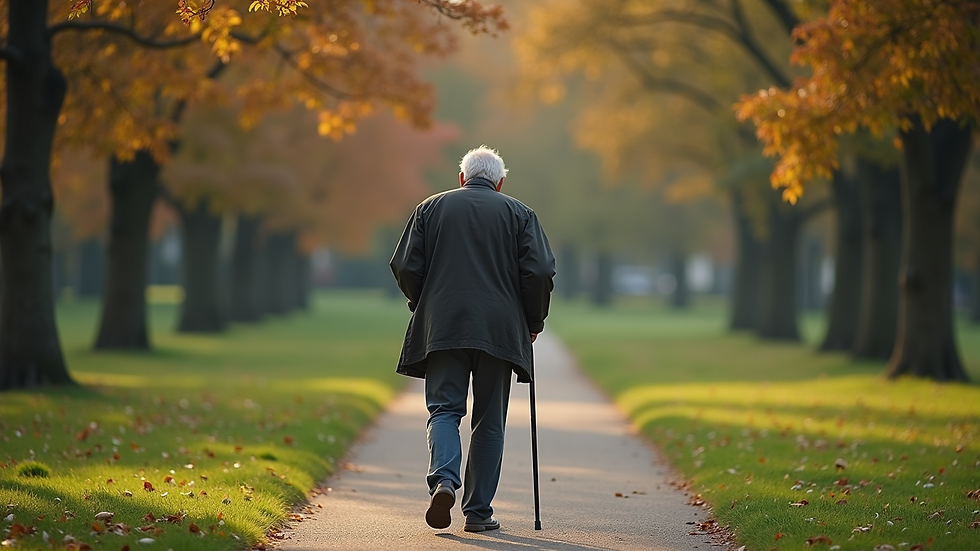Maintaining Independence Through Movement
- Kamil Mazur
- Jul 28, 2025
- 3 min read
Maintaining independence is a vital goal for many as they age. One of the most effective ways to support this independence is through regular movement and exercise. Staying active helps preserve strength, balance, and flexibility, which are essential for daily tasks and overall quality of life. This article explores practical ways to maintain mobility, focusing on exercises tailored for older adults.
The Importance of Mobility Exercises for Older Adults
Mobility exercises are designed to improve the ability to move freely and easily. For older adults, these exercises can prevent falls, reduce pain, and enhance mental well-being. Simple movements can make a significant difference in maintaining independence.
Some key benefits include:
Improved balance and coordination to prevent falls.
Increased muscle strength to support joints and bones.
Enhanced flexibility to perform daily activities with ease.
Better cardiovascular health through gentle aerobic activity.
Incorporating mobility exercises into daily routines can be as simple as stretching, walking, or using resistance bands. These activities help maintain joint health and muscle function, which are crucial for independence.

Effective Mobility Exercises to Try at Home
There are many exercises that older adults can do safely at home to maintain mobility. Here are some examples:
Chair Squats
Stand in front of a sturdy chair. Lower yourself slowly until you almost sit, then stand back up. This strengthens the legs and improves balance.
Heel-to-Toe Walk
Walk in a straight line, placing the heel of one foot directly in front of the toes of the other. This exercise enhances balance and coordination.
Seated Marching
While sitting, lift one knee at a time as if marching. This helps improve hip flexibility and leg strength.
Arm Circles
Extend your arms to the sides and make small circles. This increases shoulder mobility and circulation.
Ankle Pumps
While seated or lying down, flex and point your toes repeatedly. This promotes circulation and ankle flexibility.
For those interested in more structured routines, elderly mobility exercises offer guided programs designed specifically for seniors.

How will you promote mobility in the elderly?
Promoting mobility in older adults requires a thoughtful approach that considers individual needs and limitations. Here are some strategies:
Encourage regular physical activity by setting achievable goals and celebrating progress.
Create a safe environment by removing tripping hazards and ensuring good lighting.
Offer social support through group classes or exercise buddies to increase motivation.
Provide education on the benefits of mobility and how to perform exercises correctly.
Incorporate technology such as fitness trackers or online exercise videos for guidance.
Healthcare providers and caregivers can play a crucial role by assessing mobility levels and recommending personalized exercise plans. Community centers and senior living facilities can also offer programs that focus on maintaining and improving mobility.

Tips for Staying Motivated and Consistent
Staying motivated to exercise regularly can be challenging, especially for older adults who may face physical or emotional barriers. Here are some tips to help maintain consistency:
Set realistic goals that match current fitness levels.
Track progress using a journal or app to see improvements over time.
Mix up exercises to keep routines interesting and target different muscle groups.
Reward yourself for milestones reached, such as a favorite treat or activity.
Listen to your body and rest when needed to avoid injury.
Incorporating movement into daily life, such as gardening, walking the dog, or dancing, can also help maintain an active lifestyle without feeling like a chore.
The Role of Nutrition and Hydration in Mobility
Exercise alone is not enough to maintain mobility. Proper nutrition and hydration are equally important. Older adults should focus on:
Protein-rich foods to support muscle repair and growth.
Calcium and vitamin D for bone health.
Fruits and vegetables for antioxidants and overall health.
Adequate water intake to prevent dehydration, which can affect muscle function.
Consulting with a healthcare professional or dietitian can help create a balanced diet that supports mobility and overall well-being.
Maintaining independence through movement is achievable with the right approach. By incorporating mobility exercises, creating supportive environments, and focusing on nutrition, older adults can enjoy a higher quality of life and continue to perform daily activities with confidence.





Comments